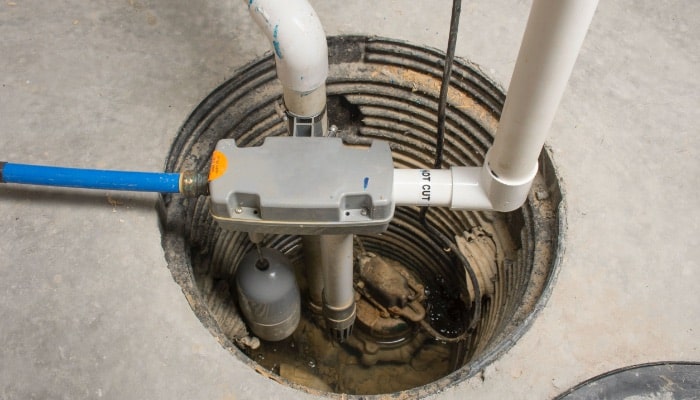
How To Prevent Basement Flooding.
Basement flooding can occur any time even if never flooded before. There are a number of reasons why basements flood. Flooding can occur by a sanitary or storm sewer backup, by seepage or flow through the walls or foundation floor, or from surface water sources.
Gravity moves water from high to low. If the groundwater level or sewer level around your home is above the basement floor, gravity will try to move that water into your basement. A crack in the foundation wall or floor, for example, provides gravity with a perfect path for water to be pushed into the basement.
If your basement is wet, most likely water pressure was building up around your foundation. Water naturally seeks the path of least resistance and enters through foundation cracks. The result…a wet basement. If it stays wet you may see unhealthy black mold growing. Sump pumps usually are a great solution for basement flooding.
Over the years we’ve seen a lot of basement flooding problems. Sometimes a back-up sump pump is needed to handle the added volume of water. But excessive basement flooding could also be caused by two other problems: drain-tiles and water run-off.
Basement Flooding Caused By Faulty Drain-Tile, Weeping Tile or Footing Drains.
These pipes are placed around your home’s foundation, 12″ to 18″ below your basement floor depth.
Drain-tile collects groundwater during rainfall or when your garden beds are irrigated. On older homes, groundwater trickles to the drain-tile entering a clay tile at the joint. Newer homes use plastic perforated PVC drainage tubing or pipe.
Blocked drain-tiles. From time to time, especially after many years of use, drain-tile can crack or become plugged with debris. Downspouts connected directly to the drain-tile will sometimes carry sediment and rotting leaves which have landed on the roof. Soils can also build up in the drain-tile.
The consequence of non functioning drain-tiles might be water seeping through the porous concrete foundation or leaving a damp mark on the basement floor or foundation wall or more serious basement flooding. The vast majority of blocked drain-tile repairs calls for the excavation and replacement of the clogged section.
Basement Flooding Is A Grading Problem.
Do you notice your landscape or property grade allows water to flow towards your home rather than away? Heavy rains could be overwhelming your drain-tiles and sump pump capacity which means basement flooding. Your solution can involve building up soil around your home or grading your land to force rain water away from your home. The less water around your home the better.
Clean, Maintain Your Sump Pump.
- If your sump pump is not working or sump pit is full of debris your basement will flood. Sump pump maintenance is a must especially after a heavy rain.
- Check your pump motor – fill pit with water make sure float switch works and pump discharges water in pit
- Check float switch – make sure it is unobstructed
- After a heavy rainfall, build up of debris is one of the major causes of sump pump failure. It is important that you check your inlet suction screen to make sure that there is no blockage. Check every few months. Especially true during persistent rainfall.
- Battery back-up pump. Check fluid levels twice a year. If you are adding water every few months, the battery may need replacing or your system may be overcharging the battery, and it needs to be serviced. Brush off any corrosion that has built up on battery terminals.
Let a proven 137 year old track record find drainage solutions that work. Call PDM Plumbing. Basement flooding help in the greater Bolingbrook, Homer Glen, Joliet, Plainfield, New Lenox area since 1885. Call 815-207-4111.






